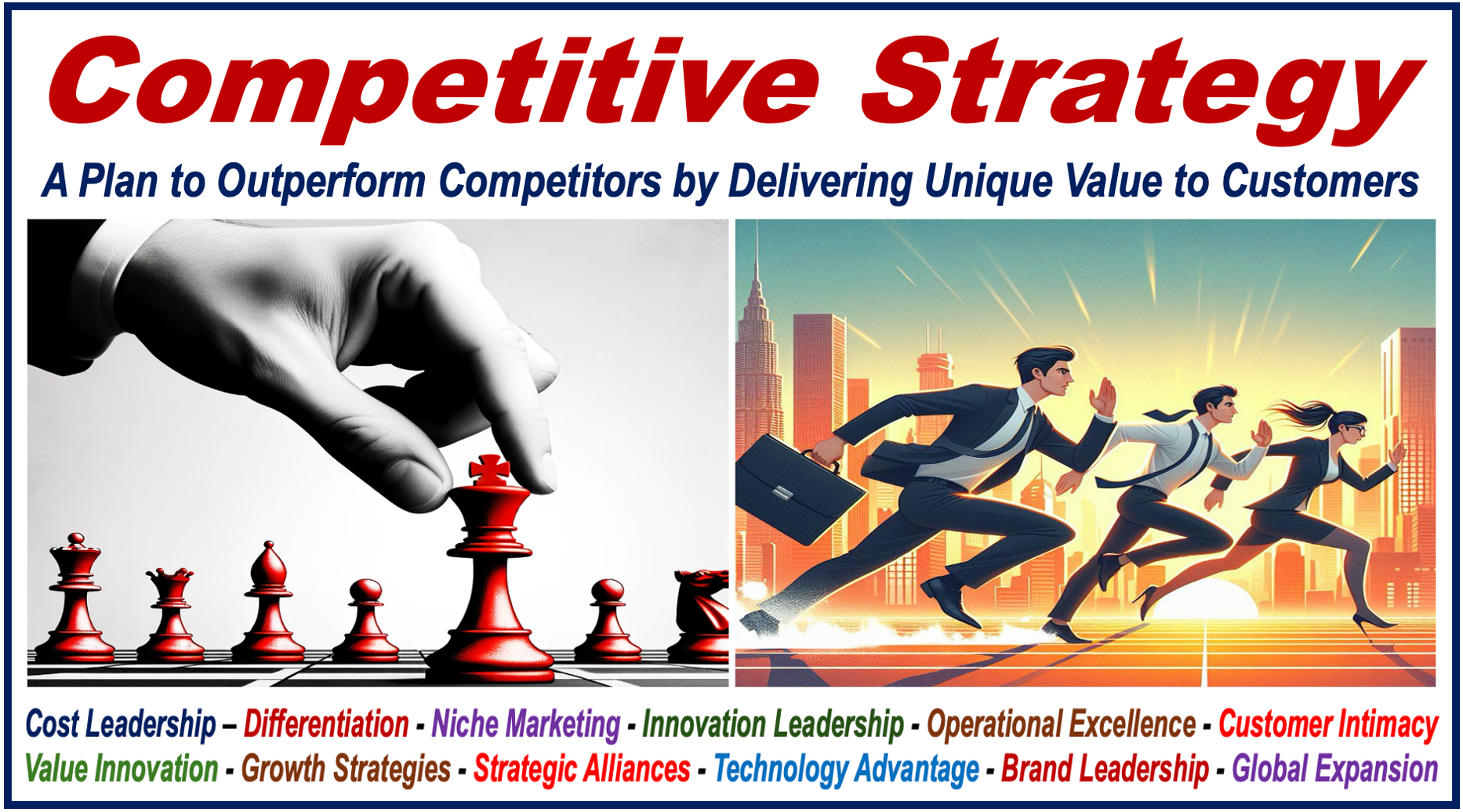Companies use a Competitive Strategy to gain a competitive advantage in the marketplace. If you are in the process of identifying and then executing actions that allow your company to boost its competitive position, you are engaging in a competitive strategy.
In today’s fiercely competitive marketplace, businesses of all sizes and ages are in a race to win customers and expand their market share. Those with an effective business strategy tend to come out on top.
If you are a marketing professional, you probably use this kind of strategy to defend your market position and gain a competitive advantage. The term “competitive advantage,” in this context, refers to your leveraging your company’s unique attributes to outperform your rivals, attracting new customers, retaining your current customer base, and achieving higher sales and profits.
The IESE Business School, at the University of Navarra in Spain, says the following about the term:
“Competitive Strategy formulation involves analyzing the industry you are in, determining how to position your firm within the competitive business environment, and identifying the core capabilities and the system of activities needed to create value and be successful.”
A long-term strategy
A competitive strategy is not a six-month or one-year plan; it is a long-term endeavor.
The aim is to gain an edge over your competitors, especially your rivals. A rival is a competitor of a similar market size to yours with comparable performance levels.
Before you develop your strategy, you must have a thorough understanding of the market, know what your competitors are doing, and be aware of your company’s strengths and weaknesses.
When you have this knowledge, your goal is to figure out how to deliver more value to customers than anyone else.

Benefits of a competitive strategy
A well-defined competitive strategy can help your company in many ways:
-
Focus
Provides you and your employees or colleagues with clearer decision-making on where to invest time and resources.
-
Attracting Customers
Highlights the best ways to convince customers that your product or service is the right choice.
-
Building a Strong Brand
Establishes a clear identity that customers and consumers in general can recognize and trust, thereby enhancing your company’s brand image.
-
Staying Ahead
Enables your company to adapt to changes and keep competitors at bay.
Types of Competitive Strategies
Here are some types of approaches you can take:
-
Cost Leadership
You can achieve a competitive advantage by optimizing your operations to offer the lowest possible prices in the market. Your aim is to attract price-sensitive customers and gain significant market share through affordability.
-
Differentiation
Aim to stand out in a sea of products by focusing on unique features, exceptional customer or after-sales service, innovative design, cutting-edge technology, sustainable practices, and customizable options.
-
Niche Marketing
Target a specific group of people by emphasizing your specialized expertise and products/services tailored to their unique requirements.
-
Innovation Leadership
Drive the market by continuously offering novel and advanced products or services. If you focus on being at the forefront of new product development and technology, your company will have a strong competitive edge.
The right strategy for your business
The best competitive strategy depends on factors specific to your business, such as industry type, company size, available financial and human resources, and objectives. It takes some careful analysis and planning to find the approach that gives you the best chance of success.
As mentioned earlier, you must have a thorough understanding of your company, competitors, and your market, as well as your business’s strengths and weaknesses before deciding which strategy to pursue.
Final thoughts
A competitive strategy is like a roadmap for business success. It helps you navigate a crowded marketplace, make smart decisions, and build a business that stands the test of time.
While developing and implementing a competitive strategy requires considerable effort and dedication, the payoff can be substantial, equipping you with the insights and direction needed to achieve long-term success and profitability.
The most successful companies around the globe understand the value of competitive strategies and devote significant time and resources to creating and improving them.
